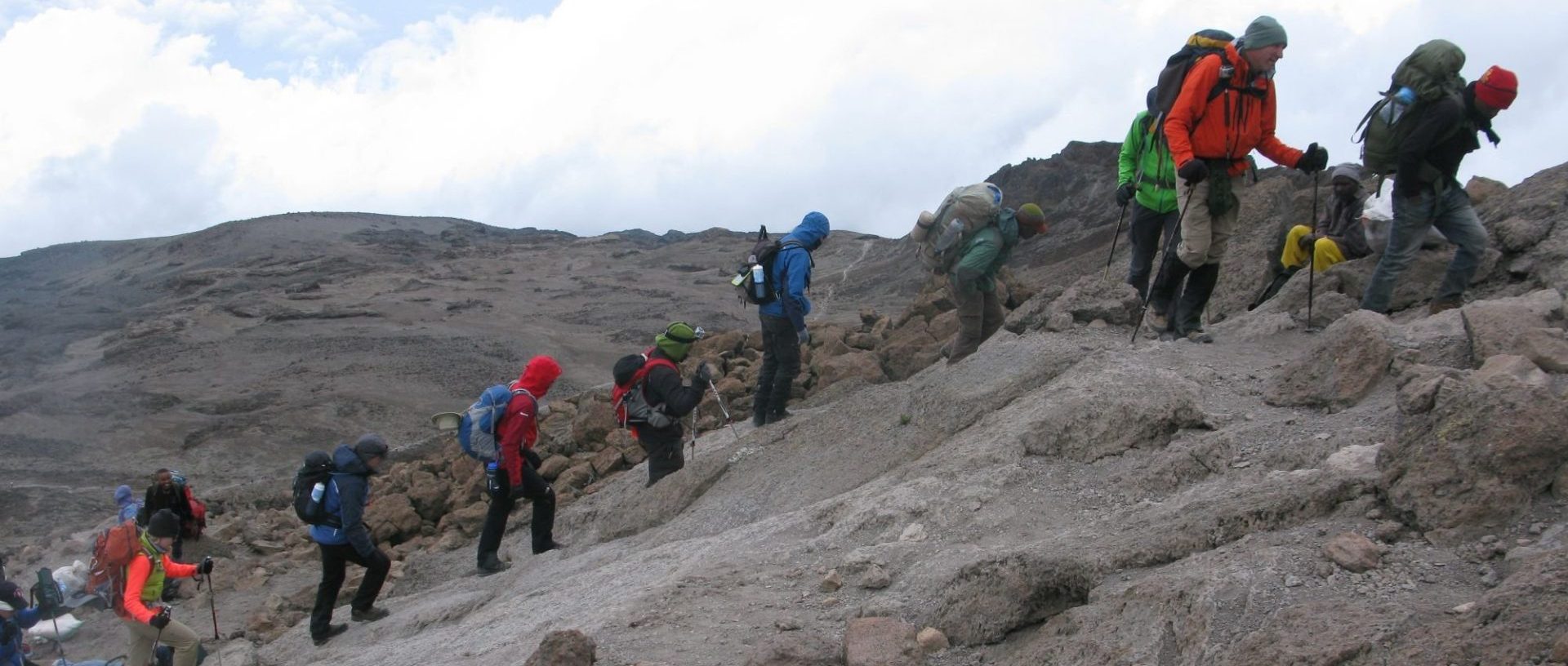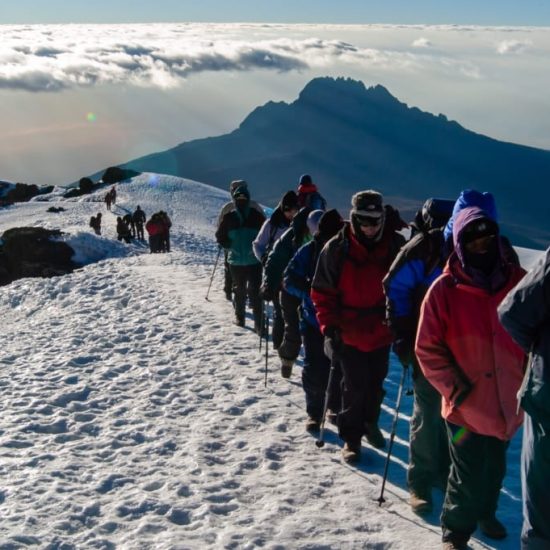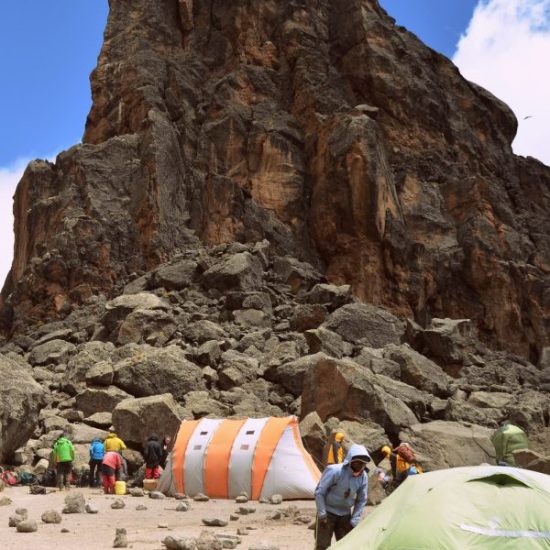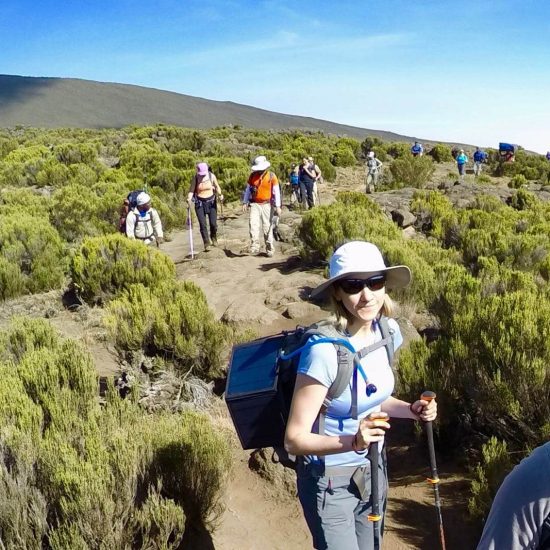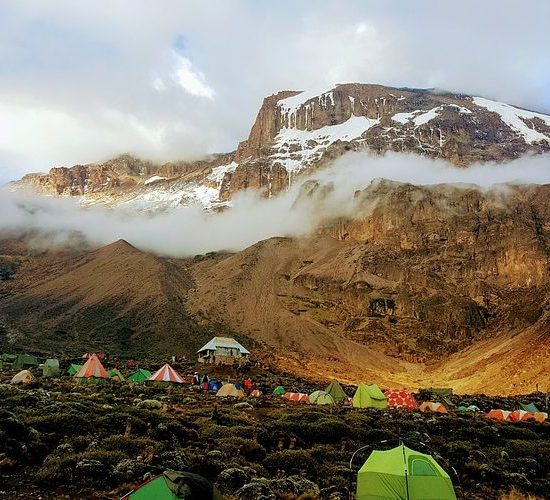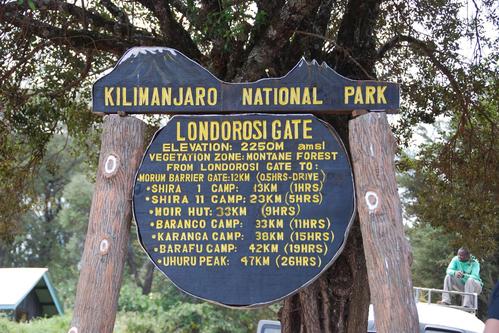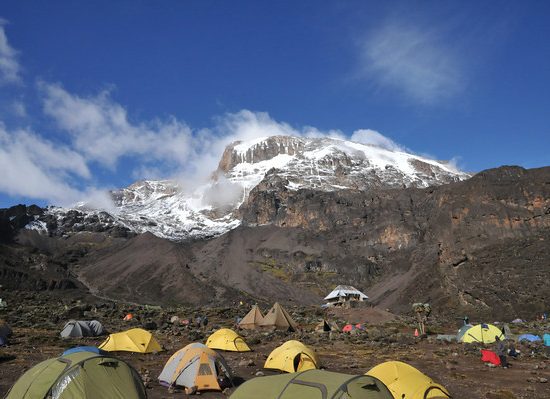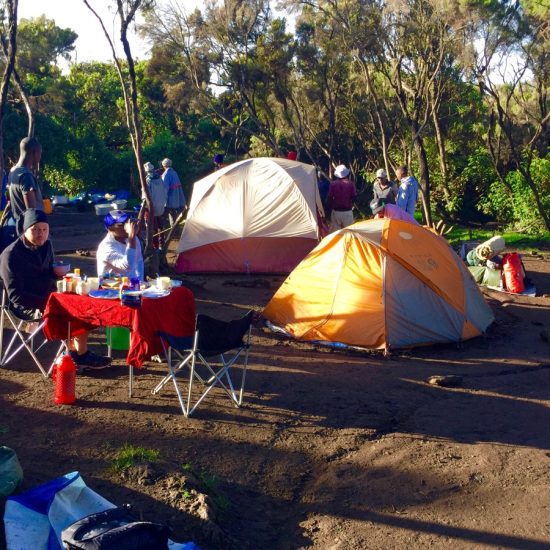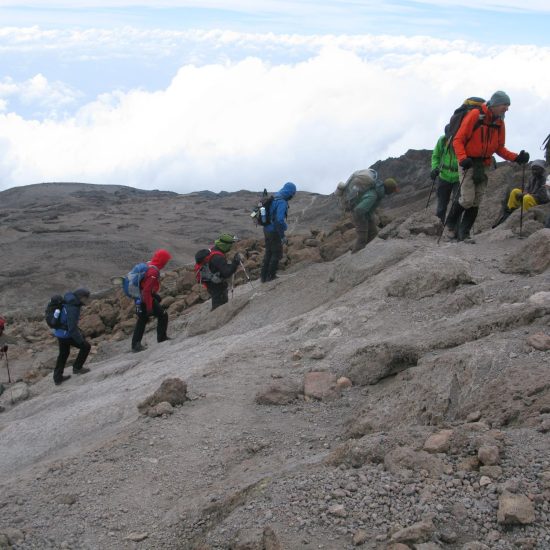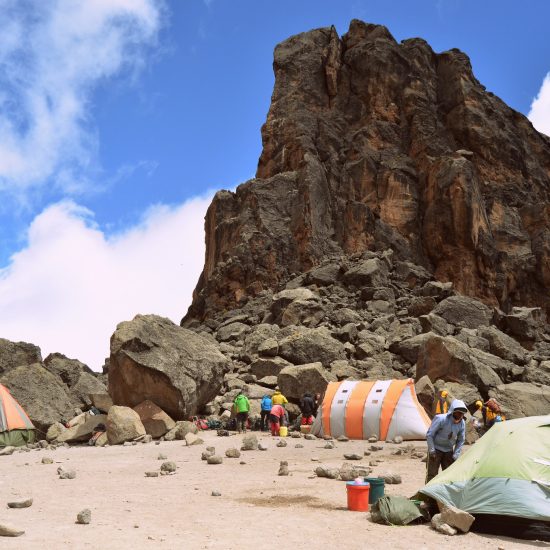Mount Kilimanjaro Climb – Lemosho Route
Lemosho route is considered the most beautiful trail on Mount Kilimanjaro hiking trip, granting panoramic views on various sides of the mountain. As one of the newer routes, Lemosho is an excellent choice for your climb. It is our preferred route due to its ideal balance of low crowds, beautiful scenes and a high probability of hiking to the summit successfully. Expect In Africa Safar specializes in guiding on the Lemosho route, most of our clients climb Kilimanjaro using this route and they consistently report that they loved it. This makes the Lemosho hiking route to the summit of Mount Kilimanjaro highly recommended..
The route approaches Mount Kilimanjaro from the west, beginning with a long drive from Arusha to Londorossi Gate. From there, the first two days are spent trekking through the rain forest to Shira Ridge. The Lemosho route crosses the entire Shira Plateau from west to east in a pleasant, relatively flat hike. Crowds are low until the route joins the Machame route near Lava Tower. Then the route travers’s underneath Kilimanjaro’s Southern ice field on a path known as the Southern circuit before summiting from Barafu, descent is made via the Mweka route..
-
Departure/Return Location
Arusha -
Departure Time
Please arrive by 8:00 AM for departure from Arusha -
Return Time
Approximately 5:30 PM return to the Lodge -
Dress Code
Women's Pioneer BUGTech And Men's Explorer Anti-Insect Safari Shirt in Khaki Olive and Katavi khaki respectively -
Included
Accommodation as included in the itineraryAirport pickups as per arrival in NairobiAirport TransfersAll applicable game Park Entrance feesDrinking water whilst on safariMeals as per itineraryProfessional Safari Guide/DriverTransport in a 4x4 -
Not Included
Cost of obtaining visaDrinks like soda, beer, and wineHot Air Ballon ride - USD 590 per personLaundryMasai village visit - USD 50 per vehiclePersonal ExpensesPre-tour accommodation can be arranged on requestTips(tipping guideline USD 20 pp per day)
Tour Plan
DAY 1 | ARRIVAL AT ( KILIMANJARO AIRPORT
Accommodation : Arusha Gold Crest Hotel
Meals : Dinner & Breakfast
DAY 2 | LONDOROSSI GATE TO FOREST CAMP
Rising (ft): 7,800ft to 9,500ft
Stretch: 6 km
Hiking time: 3-4 hours
Climatic habitat: Rain Forest
Accommodation : Shira 1 Camp
Meals : All meals included
DAY 3 | FOREST CAMP TO SHIRA CAMP
Rising (ft): 9,500ft to 11,500ft
Stretch: 8 km
Hiking time: 5-6 hours
Climatic habitat: Moorland
Accommodation : Shira 1 Camp
Meals : All meals included
DAY 4 | SHIRA 1 TO SHIRA 2 - MOIR CAMP
Rising (ft): 11,500ft to 13,800ft
Stretch: 14 km
Hiking time: 5-7 hours
Climatic habitat: Moorland
Accommodation : Moir Camp
Meals : All meals included
DAY 5 | MOIR CAMP - LAVA TOWER - BARANCO CAMP
Rising (ft): 13,800ft to 13,000ft
Stretch: 7 km
Hiking time: 4-6 hours
Climatic habitat: Semi desert
Accommodation : Barranco Camp
Meals : All meals included
DAY 6 | BARRANCO CAMP TO KARANGA CAMP - BARAFU CAMP
Rising (ft): 13,000ft to 15,000ft
Stretch: 9km
Hiking time: 8-10 hours
Climatic habitat: Alpine desert
Accommodation : Barafu Camp
Meals : All meals included
DAY 7 | BARAFU CAMP TO SUMMIT - MWEKA CAMP
Rising (ft): 15,300ft to 19,345ft and down to 10,000ft
Stretch: 5 km ascent / 12 km descent
Hiking time: 7-8 hours ascent / 4-6 hours descent
Climatic habitat: Arctic
Accommodation : Mweka Camp
Meals : All meals included
DAY 8 | MWEKA CAMP TO ARUSHA
Decend (ft): 10,000ft to 5,400ft
Stretch: 10 km
Hiking time: 3-4 hours
Climatic habitat: Rain Forest
Accommodation : Arusha Gold Crest Hotel
Meals : Dinner & Breakfast
DAY9 | DEPARTURE
Meals : Breakfast
Note: Hotel check-out is at 10:30 AM. In case you need a late check-out because of an evening flight, there is the option to extend your hotel stay for an extra fee.
Tour Review Scores And Score Breakdown



